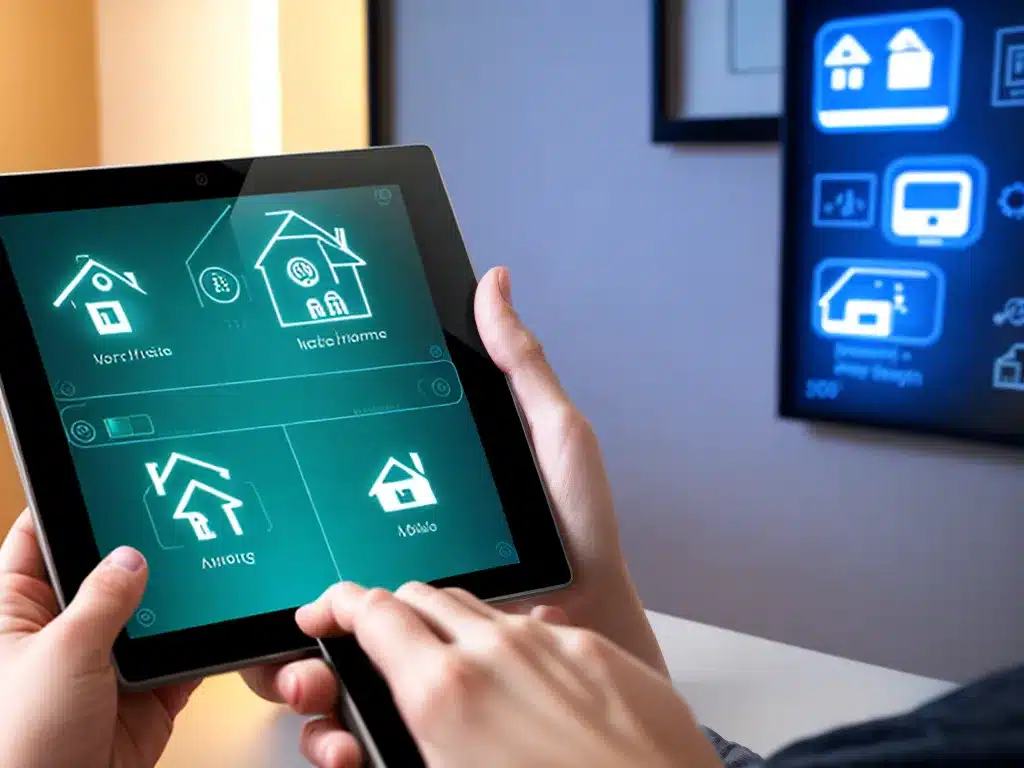
Introduction
The popularity of smart home devices and home automation has exploded in recent years. As someone who has invested in making my home “smarter”, I need to make sure I have a rock-solid backup plan to protect all of my smart home data. In this article, I will explore various strategies and best practices for backing up a smart home network.
Why Backup Smart Home Data?
There are a few key reasons why I want to backup my smart home configuration and data:
- Device failure – If one of my smart home hubs or devices fails, I could lose control of my home automation. Backups give me a way to quickly restore.
- Data loss – Smart home devices collect lots of data over time like energy usage, temperature history, etc. I don’t want to lose all that historical data.
- Configuration changes – I’ve spent lots of time configuring scenes, automation rules, etc. Backups let me revert back if I mess something up.
- Cybersecurity – Backups can help recover from ransomware or other cyber attacks.
So in short, backups help me recover quickly from data loss or device failure, while protecting my home automation investment.
Overview of Smart Home Data to Backup
Before implementing a backup plan, it’s important to take an inventory of the different types of smart home data that should be backed up:
- Device configurations – WiFi settings, links to hubs, automation rules, etc.
- User data – Usage data like energy monitoring, temperature history, motion sensing, etc.
- Media files – Snapshots from cameras, video clips, etc.
- Hub data – Device pairing info, scenes, automation rules, etc. This is crucial.
- Voice assistant data – History, preferences, routines, etc.
I need to make sure my backup plan addresses all these different data types. The most critical piece is backing up the smart home hub configuration. Without that, all my devices may have to be repaired from scratch.
Smart Home Hub Backup Strategies
My smart home is centered around a hub or controller that everything links to. So my first priority is making sure I backup the hub configuration and data itself on a regular basis. Here are some options I should consider for that:
Built-in Backup Features
Many smart home hubs like SmartThings, Home Assistant, Hubitat, and Apple HomeKit have built-in backup features or integrations. I need to schedule regular backups to either a local USB drive or to a cloud service like Dropbox.
Full System Imaging
I can create a full system image backup of my smart home hub using software like Clonezilla. This will capture the full operating system and software configuration.
Manual Data Exports
As another option, I can manually export my smart home configuration data and automations from the control panel as JSON files and store them offline.
Network Storage
For local network backups, I can backup my hub to a NAS (network attached storage) device on my network on a daily or weekly basis. Offsite backups are still recommended.
Backing Up Smart Devices
In addition to my hub, I also need to consider ways to backup the individual smart devices like lights, switches, sensors, cameras, etc. Here are some options:
- Leverage hub backups – For devices connected to my hub, the hub backups described earlier will capture the device configuration.
- Manually export data – Download usage history and media files from devices to a local hard drive whenever possible.
- Device cloud accounts – Use cloud accounts linked to devices (with caution about privacy).
- Replaceable data – Some data like energy usage can be safely excluded from backups.
Carefully backing up devices helps protect my usage history and custom configurations.
Smart Home Data Backup Options
There are a couple primary methods I can use to actually store my smart home backup data:
Local Backup
I should maintain local backups of my smart home data on an external USB drive or NAS device on my network. Benefits include speed, control, and no recurring fees. Offsite backup is still recommended in case of theft, fire, or other local disasters.
Cloud Backup
For offsite backups, I can utilize cloud storage services like Dropbox, Google Drive, iCloud, etc. This protects me against local loss events. However, I need to be cautious of privacy concerns and recurring monthly fees.
Hybrid Approach
For optimal protection, I may want to use a hybrid approach: local network backup for speed and convenience, complemented by encrypted cloud backup for offsite protection in case of major disasters.
Backup Cadence Best Practices
To make sure my smart home backups are as useful as possible, I need to follow proper cadence (how often backups run):
- Perform local backups daily for quick restores after small data losses or device failures.
- Do weekly backups to include device data that accumulates over time.
- Consider monthly full system backups to capture operating system images and all logs.
- Rotate multiple backups to have different versions on hand.
- Test restoration periodically by simulating failures.
Disciplined, automated backup procedures are essential for a smart home filled with automation and precious data.
Final Thoughts
Protecting my investment in smart home technology starts with a diligent backup plan for the myriad types of data generated. Both local and cloud storage play an important role. With modern tools, I can easily automate backups of my critical smart home hub along with connected devices. Regular testing also gives confidence my data is protected if disaster strikes. What smart home backup strategies are you using? Let me know your thoughts below!












